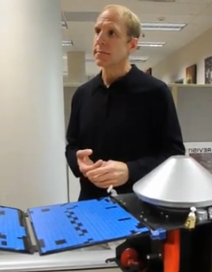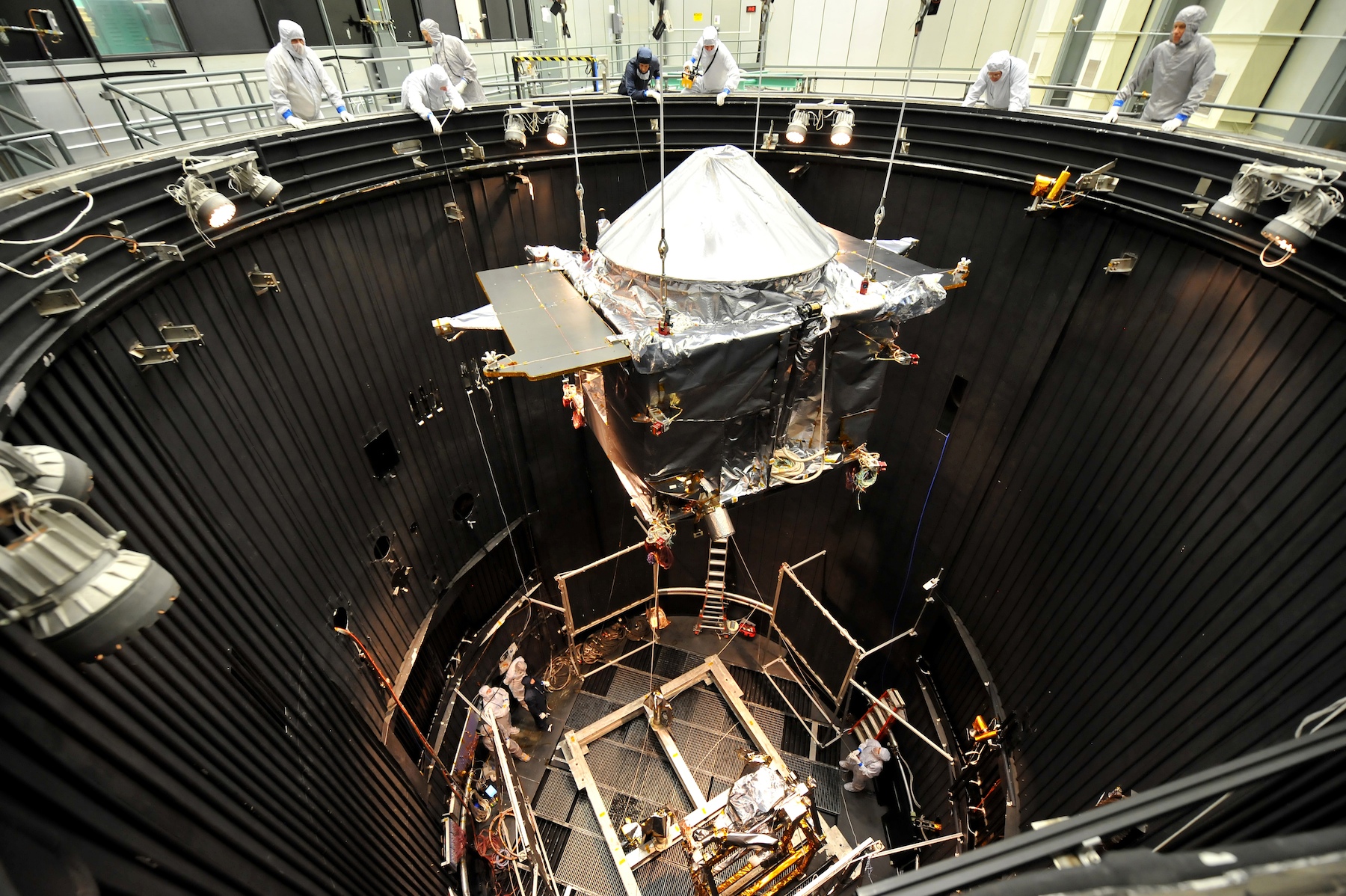Guy Beutelschies is
the Chief Systems Engineer at Lockheed Martin Space Systems Company and MAVEN
Flight Systems Manager
How do you make sure a spacecraft can survive in space? Facing the sun, surfaces can get hotter than any desert. In the shade, it is colder than any winter in Antarctica. The vacuum of space can wreak havoc if you don’t use the right materials. Launch is even tougher. If you‘ve ever been lucky enough to see a launch in person, you can feel the vibration rumbling in your chest from over a mile away. Now imagine what the spacecraft is experiencing as it sits on top of that “controlled explosion.”
The answer is
testing, lots of testing. We
arrange the tests in roughly the same order as the spacecraft will experience
in its mission. That means we do
launch first. It may not be
readily obvious, but the sound during launch is so intense that it can actually
break things. To simulate this, we
put the spacecraft in a special test chamber with enormous speakers and crank
up the sound to deafening levels.
Although it is tempting to play some Led Zeppelin, we use a noise
spectrum that simulates the Atlas V rocket firing.
The next one is
a vibration test. We put the
spacecraft on a large device called a shaker table that moves a plate back and
forth to provide the vibration that the vehicle will get on the rocket. After shaking it in the horizontal
axes, we rotate the piston-like device on the shaker table so that it moves the
spacecraft up and down. It wasn’t
easy for me to see the spacecraft we’ve spent so much time carefully building
being shaken like that, but it was important to do.
Soon after
launch, we will then deploy the solar arrays. This is a tricky test on Earth because of the gravity down
here. We need to make sure gravity
is not “helping” the arrays deploy during our ground testing. To mitigate this, we turn the
spacecraft and deploy the arrays to the side so that the hinges are
perpendicular to the ground. We
also used special stands to support the weight of each array while allowing
them to move freely across the floor as they deploy. We follow the same process for deployment tests on the
Articulated Payload Platform boom and the Solar Wind Electron Analyzer boom.
The third major
environmental test involves radio waves.
Most of our regular tests use cables between the ground equipment and
the spacecraft to send commands and receive telemetry. During the mission, our only link to
the spacecraft is through radio signals.
For this test, we set up a special acoustics chamber to block out all
outside radio signals that might interfere, and then use special ground
antennas to talk to the spacecraft antennas as if MAVEN were out in space. The tests also make sure that the various portions of the
spacecraft do not interfere with each other and that the radio waves from the
ground do not interfere with equipment on the spacecraft.
The final
environmental test is our biggest one.
The MAVEN spacecraft is put in a thermal vacuum chamber; think giant
thermos bottle. Once inside, we
pump out the air and flood the hollow walls with liquid nitrogen which brings
the temperature down to -290 degrees Fahrenheit. Giant lamps in the ceiling simulate the direct heat
from the sun. This test makes the spacecraft “feel” as if it’s in space. We
spend several weeks in vacuum simulating the entire mission from the heat of
the sun you get being near Earth, to the cold it will experience in the shadow
of Mars. It is almost as tough on
the team as it is on the spacecraft because the test consoles need to be
monitored around the clock for the entire test. That is a lot of evenings, weekends, and graveyards
shifts.
This regimen of environmental testing may sound like a lot of work, but after spending years designing and building it, we want to make sure everything work correctly. If something needs to be fixed, we want to learn about it while it here on the ground. Once we launch, there is no bringing it back to the shop for repairs. These tests give us a lot of confidence that MAVEN will be ready for its launch on November 18th.
With the recent completion of thermal vacuum testing, the MAVEN spacecraft has now successfully completed and passed all of its environmental test procedures. The team will now focus on the remaining Launch Operations Readiness Tests (ORTs), a final Planetary Protection review, and a spacecraft pre-ship review in preparation for shipping MAVEN to Cape Canaveral, Florida, in early August.


